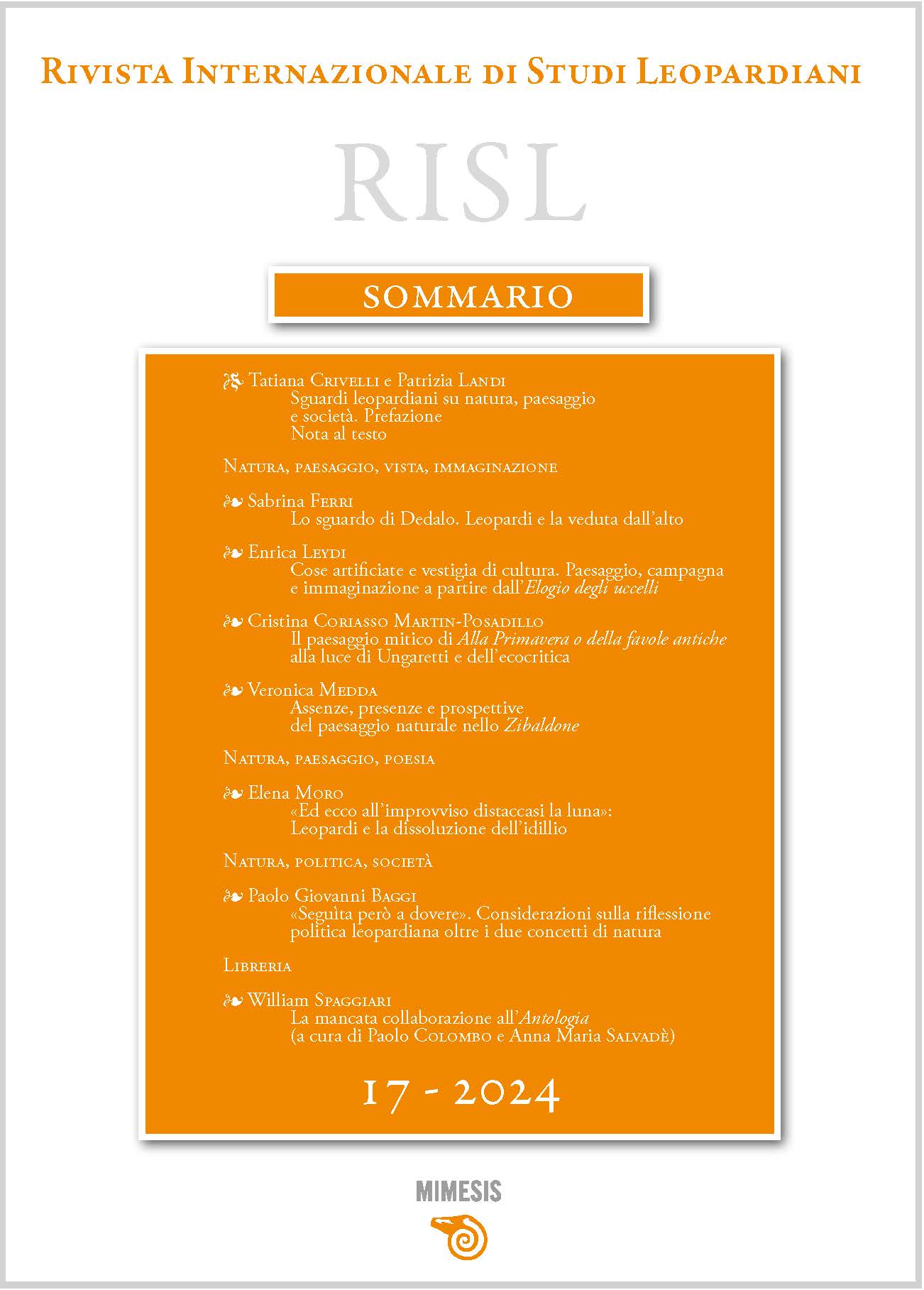«Ed ecco all’improvviso distaccassi la luna»: Leopardi e la dissoluzione dell’idillio
Parole chiave:
Leopardi, idillio, modernità, cornice, antropocentrismo, contraddizione.Abstract
Leopardi’s relationship with the idyll is a fundamental yet complex issue, one that is always worth investigating. Positioned within an already extensive body of scholarship, this paper analyses the series of idylls written between 1819 and 1821 from a particular point of view. This perspective shows how Leopardi deconstructs the genre, dissolving the traditional idyll through repurposing its defining features. Treating the series as a macrotextual unit, built upon key elements of continuity, this study explores how Leopardi reimagines the idyll by drawing on the productive tension amongst antithetical forces. These include the human desire for recognition and rootedness in the world – linked to an ancient anthropological perspective – and the awareness of a deeply anti-anthropocentric worldview, informed by scientific and philosophical paradigms. The idyll thus emerges as a fully modern ‘genre of contradiction’: no longer a secluded locus amoenus where tensions between the ideal and the real are resolved, but rather an open-ended space where these tensions are both heightened and accepted as an intrinsic part of the modern condition.






